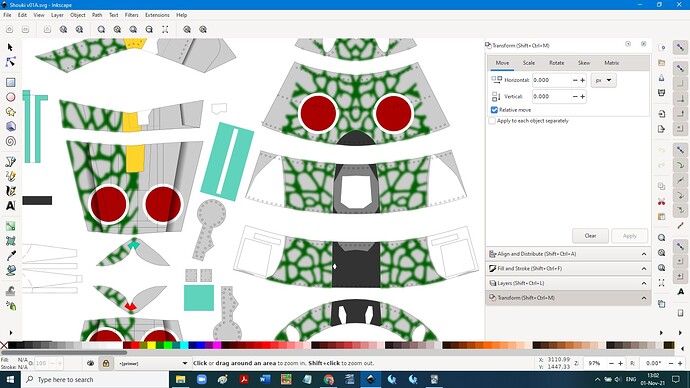Hi all,
Usually figure things out by myself, maybe not most elegantly, but good enough. I have something I’d like to do, and don’t know how to go about it, and would appreciate suggestions as to appropriate plugins to try. Want to create a guardrail for a mid-century modern type of house for around the edge of a patio in locations where the height above grade requires a guardrail. The guardrail follows a rock wall that is curving, and I thought of an approach that would take 10ga. +/- Corten steel sheet, laser cut an appropriate pattern in it, and roll the sheets to the curves. So the SketchUp problem is, how to cut a pattern in a singly-curved surface? I could easily cut the pattern in a flat face, either as a single face since it’s thin anyway, or I could push-pull it to an 1/8" or so, and then curve that product. Or is there an entirely different way to go about this?
Thanks,
I would look at extensions such as Shape Bender and Flowify. I think at least one of those would do the job.
Eternal thanks, Dave! Finally met with success, though the biggest problem wasn’t the Shape Bender. I started with an online image of a pattern that would work, placed it in Illustrator, used autotrace, and exported it as a .dwg. From there I had endless problems in SU, both because there were too many edges, and also I think some element got corrupted and kept crashing SU. Tried tracing it with the arc tool in SU, but that was never going to come out looking good. So I took the dwg into Vectorworks and it was beautiful. Cleaned it up an exported it from VW as a dwg, but regardless of what I tried, it was horrible in SU! In a dwg viewer, it looked as good as it had in VW. So I took the VW dwg into Illustrator again, though I had to experiment with what version to save it as so Illustrator would open it. Then I exported the dwg from AI into SU, and with a little cleanup, it was beautiful. Is your head spinning?
You could also consider building this with the Profile builder extension.
You would create vertical and oblong components and a top and bottom profile, then you just draw a path for PB to build the assembly along.
You can add more depth to components if necessary and everything would be parametric too.
Thanks for the suggestion. I do have that extension, but just not enough time to play with things in SU!
Profile builder would be useful if the railing was a design feature and you needed to make a few design changes, etc.
You do have to like math though, as you have to input all the dimensions of where your components exist in relation to others.
Is my issue similar? I want to “cut” diamond shapes into the rear fuselage of this airplane (like in the picture in the background) as I have done to the copies of the fuselage below with the two simpler arrows. I just can’t imagine how to do so with a pattern this complex, since it would presumably need to be projected through a 180 degree arc instead of just stretched in one dimension. Is there a solution that does not involve many steps or mastering a new complex extension? ![]()
Dva1.skp (1.4 MB)
Why don’t you use a texture? The original was painted and not stitched together from different coloured metal or canvas patches.
I want to unwrap/flatten the pieces for exporting to Inkscape and eventually printing on paper, and textures will turn out to be too pixelly for my purposes. I like the vector graphic aspect of Sketchup that allows me to see very precisely where two color fields stretching across separate parts meet even when they are in different spots on a page. Here is some of the fantastic matching of patterns which is possible with Sketchup using the technique above (and then later reworked in Inkscape), but it was just projected from one direction as above, not concentrically.
You put them on paper and then what do you do with them?
Here’s what:
https://www.flickr.com/photos/139506782@N02/albums/with/72157671433855606
or here
https://twitter.com/ned_reif
You somehow form the paper into real 3d models? How skillful and creative! I can’t begin to imagine.


